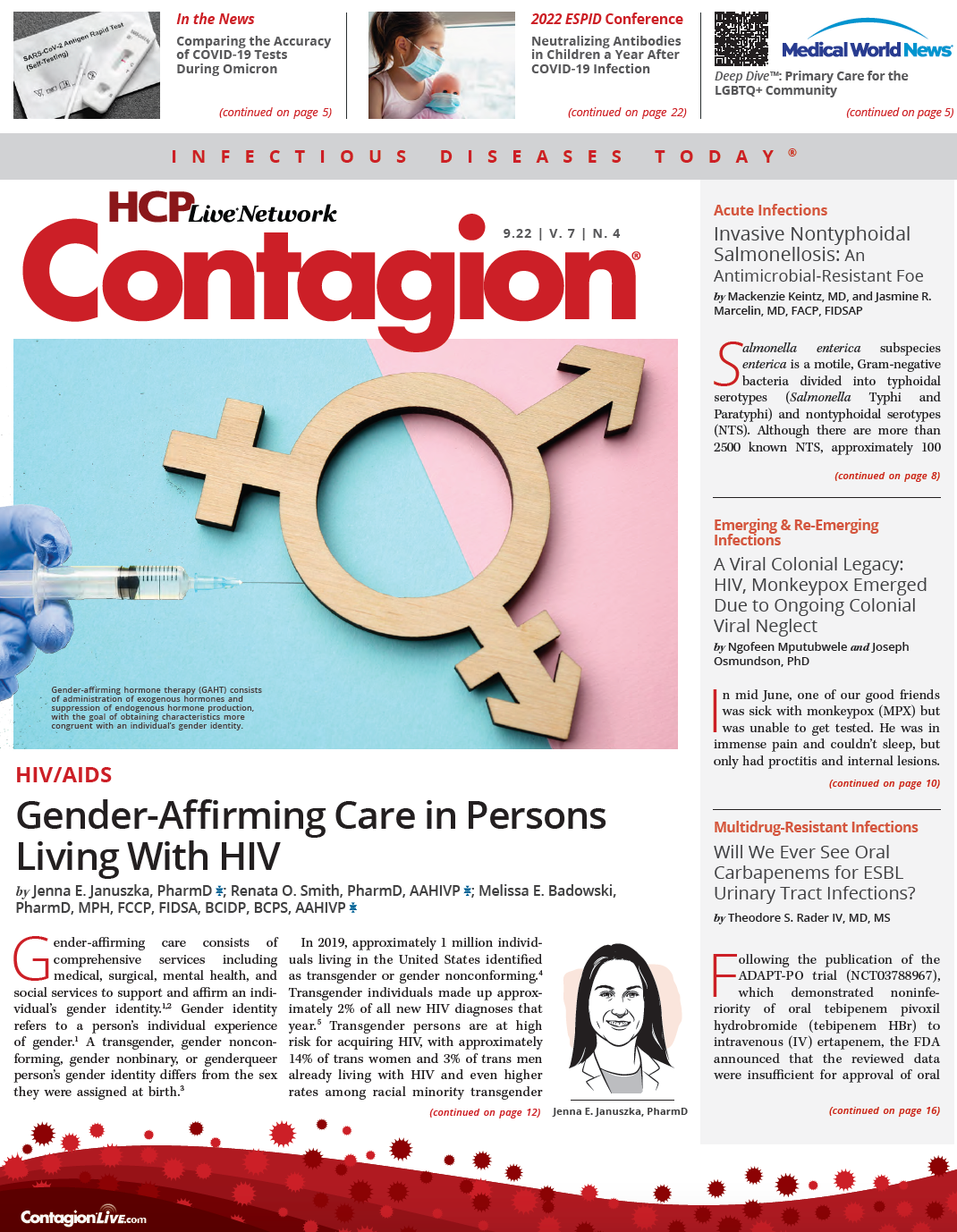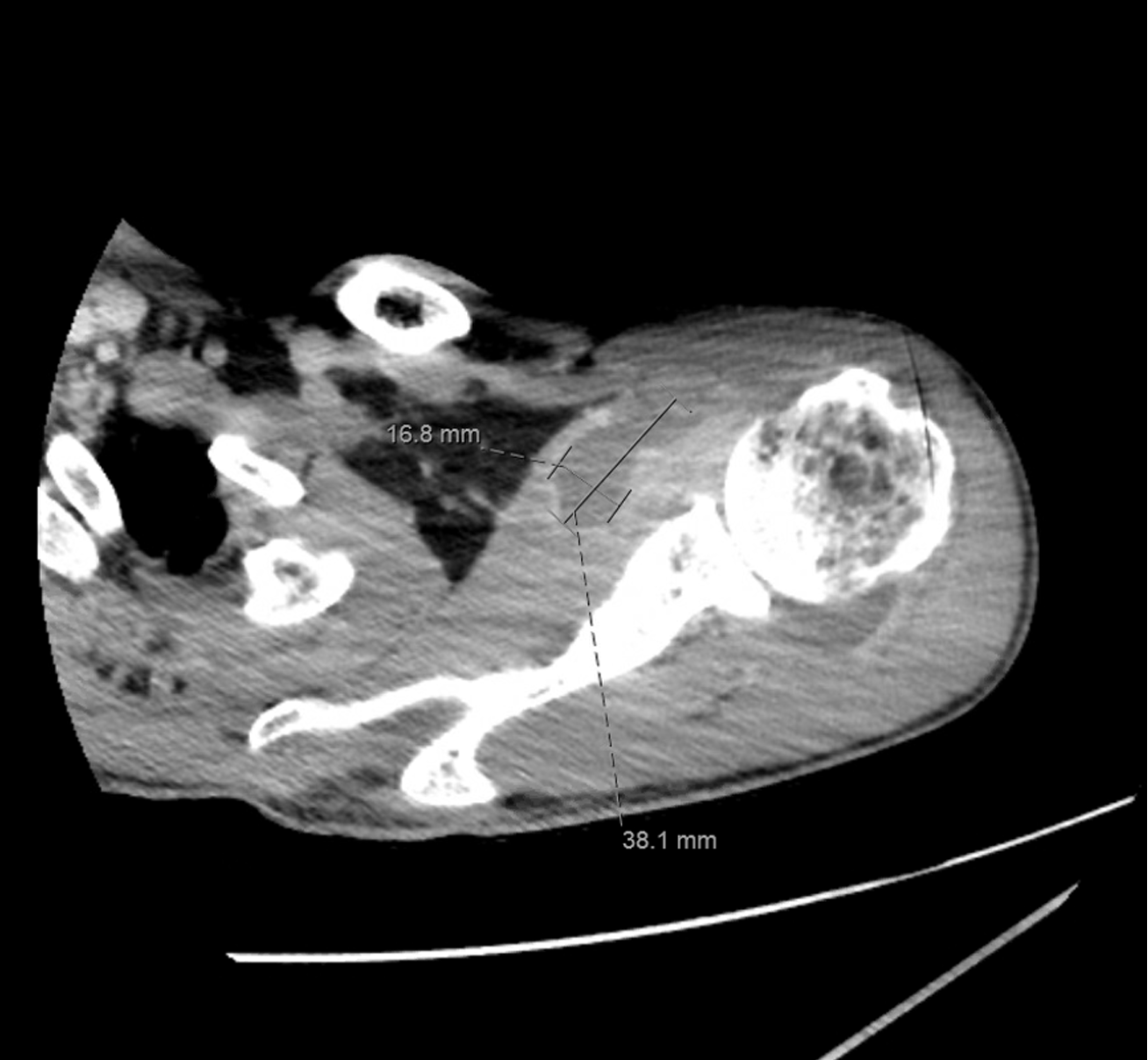Rapid, Reliable Diagnostic and PoC Tests Are Requisite for “Test to Treat"
Progress in rapid diagnostic and point-of-care testing propelled by the pandemic can improve timeliness and precision of anti-infective treatment.
The value of rapid diagnostic tests, point-of-care (PoC) tests not tethered to centralized laboratories, and self-administered home tests became widely appreciated in the waves of the COVID-19 pandemic for hastening identification, isolation, and treatment that interrupted the geometrically increasing rate of infection. However, in the early stages of the pandemic, it was also widely acknowledged that SARS-CoV-2 was spreading faster than testing resources could provide timely and accurate results across communities.
The disparity between transmission and testing was well characterized by Elisabeth Rosenthal, MD, editor-in-chief of Kaiser Health News, in a New York Times opinion piece published in July 2020, “When Is a Coronavirus Test Not a Coronavirus Test?”1 “One canon of medical practice is that you order a test only if you can act on the result. And with a turnaround time of a week or 2, you cannot. What we have now is often not testing—its test theatre,” Rosenthal wrote. Even before the COVID-19 pandemic, advances in testing technologies were welcomed for providing faster turnaround of actionable results with increased specificity and sensitivity for a range of medical conditions.
For infectious diseases, rapid identification of pathogens and their susceptibility provides opportunity for more precise treatment, with better patient outcomes and less antimicrobial resistance. Rapid diagnostic tests are enabling earlier differentiation of viral and bacterial infections. PoC tests are used to detect pathogens such as Group A Streptococcus for outpatients with a sore throat. In hospital settings, rapid diagnostic tests are coupled with artificial intelligence analysis of multiple clinical measures to detect early signals of sepsis and increase the opportunity for lifesaving intervention.
PANDEMIC PUSHES TECHNOLOGY
The availability of rapid antigen tests (RATs) for SARS-CoV-2 in hospital emergency departments enabled better triage and patient flow, with reduced transmission to other patients and staff. Widely accessible RATs facilitated safer gatherings and the reopening of commerce and travel. Refinements in molecular testing provided verification of RAT screening, confirmed effectiveness of treatments, revealed COVID-19 variants, and guided development of targeted vaccines. Telehealth is among the technologies that quickly evolved under pressure of the COVID-19 pandemic, providing an alternative to travel and in-person consultations for many, as well as reducing risk of exposure to the contagion for both patients and practitioners.
A particular synergy from coupling telehealth with in-home self tests for influenza was evaluated by Mark Ebell, MD, MS, a professor in the Department of Epidemiology and Biostatistics in the College of Public Health at the University of Georgia in Athens, and colleagues.2 “We’ve all learned to recognize the potential for telehealth [and] its limitations,” Ebell told Contagion®. “The need for in-person evaluation is generally driven by the severity of symptoms and the presence of red flags such as dyspnea. Oxygen saturation monitors are increasingly in the homes of patients, which may help identify patients who need in-person evaluation.”
Ebell and colleagues provided clinical case vignettes simulating telehealth consults of patients experiencing 24 hours of a flu-like illness to approximately 200 physicians. They then ascertained how the availability of a home influenza test result would affect their decision to treat empirically, have the patient come to the clinic for further evaluation, or to neither test nor treat. “We found that once they got the test result, only half as many wanted the patient to come into their office,” Ebell said. “This is important [because] keeping patients out of the office can reduce the likelihood of transmission to others while lowering costs and increasing convenience for patients.”
The accuracy of a home self-test for influenza (Ellume) was recently evaluated in 87 patients with positive home test results by retesting with reverse transcription–polymerase chain reaction (RT-PCR).3 The investigators reported that the overall sensitivity and specificity of the home test compared with the PCR reference were 61% (95% CI, 50%-71%) and 95% (93%-97%), respectively.
Although progress in testing technologies has facilitated identification of pathogens and supported antibiotic stewardship efforts, the pandemic set back the success of those efforts, according to a 2022 Special Report from the CDC, “COVID-19 US Impact on Antimicrobial Resistance.”4 In her forward to that report, Rochelle Walensky, MD, MPH, director of the CDC, wrote, “As the pandemic pushed health care facilities, departments, and communities near their breaking points in 2020, we saw a significant increase in antimicrobial use, difficulty in following infection prevention and control guidance, and a resulting increase in health care–associated, antimicrobial-resistant infection in US hospitals.” Among the actions called for in the report is a merging of strategies to respond to COVID-19 and antimicrobial resistance, including using telehealth for contact tracing and to support specimen self-collection. The report also recommends additional investments into clinical laboratory programs such as the Antimicrobial Resistance Laboratory Network, as well as its evaluations of bacterial whole genome sequence submissions.
RAPID RESULTS WHEN AND WHERE NEEDED
The number and types of nucleic acid amplification tests that have received emergency use authorization from the FDA increased substantially during the pandemic to meet the urgent need to detect SARS-CoV-2.5 These include RT-PCR systems, loop-mediated isothermal amplification (LAMP), and clustered regularly interspaced short palindromic repeats.
Although most of these remain benchtop systems, a recent review describes some that have been miniaturized, automated, and linked to portable digital platforms as PoC tests for on-site rapid diagnosis of viral respiratory tract and other infections.6 These more nimble PCR-based systems can complete identification of genetic material—either RNA or DNA nucleic acid sequences—in between 20 and 100 minutes. The LAMP system for DNA amplification is credited for using a DNA polymerase that acts at a constant temperature of 60 to 65 °C, eliminating the need for a thermocycler and reducing system cost and complexity.6
Among the nonmolecular PoC tests, which are included in the review for facilitating earlier diagnosis of infectious diseases, are immunochromatography and immunofluorescence (IF) systems. The former is being applied to diagnose several bacterial, viral, parasitic, and fungal infections. Although these have lower sensitivity, lower specificity, and a narrower spectrum of targets than molecular platforms, results are attained in 15 minutes. The IF tests are also yielding results in 15 minutes, albeit with low sensitivity for influenza. One system packaging IF with a kit for antigen detection and an optical sensor provides results in 10 minutes.6
A recently developed “point-of-need” RT-PCR-based system rapidly detects host gene expression to differentiate viral from bacterial infection. The measure of host gene expression in peripheral blood exploits the differences in immunological responses to bacterial and viral infections. This host response bacterial/viral (HR-B/V) test detects 45 host messenger RNA targets in approximately 45 minutes.
Emily Ko, MD, PhD, Center for Applied Genomics and Precision Medicine at Duke University School of Medicine in Durham, North Carolina, and colleagues tout the advantages of this system compared with pathogen identification tests such as multiplexed syndromic panels.7 Although they acknowledge these are important diagnostic tools, they point out that they are unable to detect bacterial or viral causes in most acute respiratory illnesses or, when a microbe is identified, distinguish between colonization and infection.
Ko and colleagues also point to mixed results with procalcitonin, a host biomarker widely used in distinguishing between bacterial and viral infections. In their analysis of the HR-B/V system, which involved 334 participants, Ko and colleagues reported the test to be superior to procalcitonin in detecting bacterial infection. The HR-B/V system demonstrated sensitivity of 89.8% (77.8%-96.2%) and specificity of 82.1% (77.486.6%), as well as a negative predictive value (NPV) of 97.9% (95.3%-99.1%).
In comparison, the sensitivity of the procalcitonin measure was 28.6% (16.2-49.9%), the specificity was 87.0% (82.7%-90.7%), and the NPV was 87.6% (85.5%-89.5%). “Measuring gene expression simply, rapidly, and reliably requires the convergence of multiple technologies, including blood cell lysis, RNA purification, RNA preservation or rapid processing, and quantitative realtime reverse transcription amplification,” Ko and colleagues said. “As the path from signature discovery to test development and commercialization comes into focus, we expect the development and use of point-of-need host response–based diagnostic tools to expand.”
READILY ADOPTING RAPID TESTING
In summarizing a 2021 survey of opinions about rapid and PoC testing among health care practitioners in the United States, Europe, and China, the survey sponsors—Sermo, a health care social network platform, and Ipsos, a market research firm—described respondents’ favorable expectations and their concerns.8 They reported general enthusiasm for “gained control of end-to-end patient care, removing the need to wait for a third party to collect a sample; send it to a lab for testing and share the results.”
The concerns were largely with questions of accuracy. As an emergency physician in the United Kingdom is anonymously quoted in the survey, “The difficulty is then about the quality assurance. How do you make sure the results you are getting are truly reflective of what a lab test would give you?”
A RAND Europe survey and review of studies on the use of PoC testing for infectious diseases found that adoption varied widely between European countries.9 The investigators attributed a relatively higher use in France to a decision in that country to reduce the number of centralized laboratories. RAND Europe investigators found that influenza is the most common infectious disease diagnosed with PoC in 19 countries, followed by HIV in 17 countries and Legionnaires disease and malaria in 13 countries.
In at least 5 countries, PoC tests were routinely used for syphilis, chlamydia, hepatitis B and C, nosocomial and antimicrobial-resistant infections, tuberculosis, invasive pneumococcal disease, dengue, invasive meningococcal disease, gonorrhea, and cryptosporidiosis. In the studies assessing diagnostic accuracy, RAND Europe investigators found considerable variation evident, even in the same tests. Although a total of 63 devices were reported to have sensitivities of 90% or higher, the investigators determined that 75 devices were reported to have sensitivity of less than 59%.
Alison Kuchta, MD, PhD, clinical development lead at Roche Diagnostics in Pleasanton, California., discussed both the state of rapid and PoC testing technologies and the state of their acceptance and utilization. “In recent years, we have seen broader acceptance of decentralized testing models and a dramatic increase in the adoption of molecular point-of-care and immunoassay at-home testing solutions,” Kuchta said. “These developments have supported societies in their fight against the COVID-19 pandemic and, more enduringly, brought testing closer to patients across a range of traditional and nontraditional settings—from emergency departments, general practitioner (GP) offices, and urgent care facilities to airports and oil rigs.”
Kuchta indicated that development priorities anticipate a future in which PoC solutions are connected, interoperable with health care systems, and equipped with innovative digital capabilities. “We have [several] anticipated launches for solutions that will create what we are calling a ‘digital ecosystem’ by bridging tests with downstream data on cloud-based platforms,” Kuchta told Contagion®.
References
- Rosenthal E. When is a coronavirus test not a coronavirus test? The New York TImes. July 24, 2020. https://www.nytimes.com/2020/07/24/opinion/covid-test-turnaround.html. Accessed July 30, 2022.
- Cai X, Ebell MH, Geyer RE, et al. The impact of a rapid home test on telehealth decision-making for influenza: a clinical vignette study. BMC Primary Care. 2022; 23:75. https://doi.org/10.1186/s12875-022-01675-1.Accessed August 1, 2022.
- Geyer RE, Kotnik JH, Lyon V, et al. Diagnostic accuracy of an at-home, rapid self-test for influenza: Prospective comparative accuracy study.JMIR Public Health Surveill. 2022; 8. https://publichealth.jmir.org/2022/2/e28268. Accessed August 1, 2022.
- CDC. COVID-19 U.S. Impact on Antimicrobial Resistance. 2022 Special Report.https://www.cdc.gov/drugresistance/pdf/covid19-impact-report-508.pdf. Accessed August 2, 2022.
- CDC. Nucleic Acid Amplification Tests (NAATs) Summary of Recent Changes. Updated June 16, 2021. https://www.cdc.gov/coronavirus/2019-ncov/lab/naats.html. Accessed August 2, 2022.
- Pircalabioru GG, Iliescu FS, Mihaescu G, et al. Advances in the rapid diagnostic of viral respiratory tract infections. Front Cell Infect Microbiol. 2022; 12. https://www.frontiersin.org/articles/10.3389/fcimb.2022.807253/full.Accessed August 2, 2022.
- Ko ER, Henao R, Frankey K, et al. Prospective validation of a rapid host gene-expressoin test to discriminate bacterial from viral respiratory infection. JAMA Network Open. 2022; 5. https://jamanetwork.com/journals/jamanetworkopen/fullarticle/2791032. Accessed August 3, 2022.
- 8.Sermo, Ipsos. Future of Point of Care & Rapid Testing. Ispsos. February 2022. https://www.ipsos.com/sites/default/files/ct/publication/documents/2022-03/Ipsos_Future of POC and Rapid Testing_March 2022.pdf. Accessed August 10, 2022.
- 9.Hocking L, George J, Broberg EK, et al. Point of care testing for infectious disease in Europe: A scoping review and survey study. Front Public Health 2021; 9: https://doi.org/10.3389/fpubh.2021.722943. Accessed August 10, 2022






























